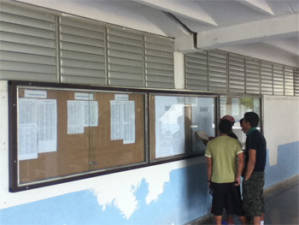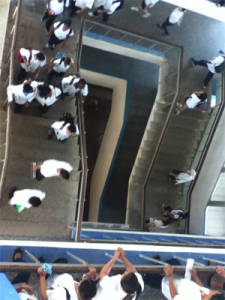Cultural Adjustment in Cuba
Graham Sowa

Social scientists love taking cues from the biological sciences. We can see that the social science project that has spent the past hundred or so years dividing up society into different parts, and then dividing up the phenomenon that occur in those parts.
This division can extend to the individual, where something as complicated as grief over the loss of a loved one has been declared to be a process of five stages. There are even defined stages of living in a different culture: the honeymoon, hate, coping, and acceptance.
I’ve entered my second year at the Latin American School of Medicine (ELAM) in Cuba and I can’t say with any certainty at which stage (or stages) I’m currently in. I look around at the new students, those entering the pre-medicine and first year courses, and their position is not easily defined either.
New students move around in groups, not cliques. They are not yet set apart enough from one another by appearance or demeanor to be separated into cliques. Some are novices at living in new cultures; this is their first time to ever leave their country of birth.
Others of us have lived outside our home country before, or we’ve been in Cuba long enough to look like we know what we’re doing by venturing off on our own.

But the fact that we hang out with a group not does not get us any closer to determining where we are in the stages of living in a different culture. After all, groups could be formed to love, hate, cope or come to terms with the new culture it exists in.
A lot of people in the school seem to move around in groups of students that come from their country. The school facilitates this by making sure that no one from one country or region is by themselves in a classroom.
This means that the before class chatter is happening in several languages. I’m accustomed to hearing Portuguese, Malay and the various forms of Caribbean English mixed in with many dialects of Spanish as the professor calls the class to attention and we stand for inspection.
It might be possible that because we spend so much time in the school with people from homelands that we don’t have to go through these stages of cultural adjustment. Even more likely is that our experience with honeymooning, hating, coping and accepting is much different in this institutional setting than it would be if we were living among Cubans and having to live our lives by the same rules that they have.






What stage do you think Emily was in after a week on the island when she dubbed it “planet Cuba??”
I think the stage of happy is good cuz then time flies and memories compound.